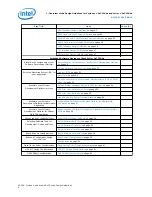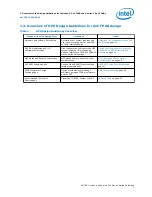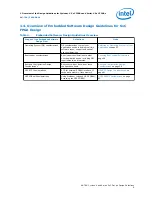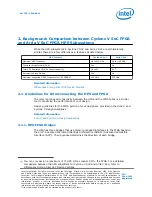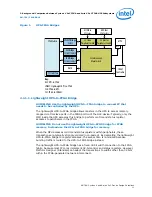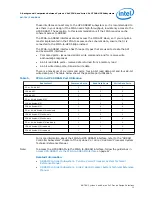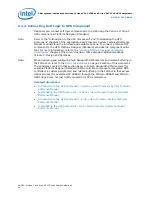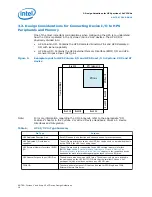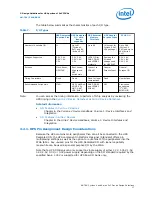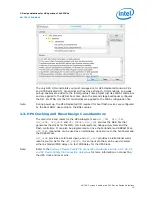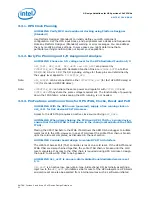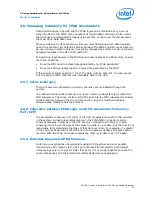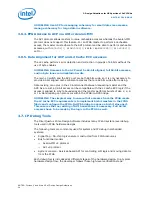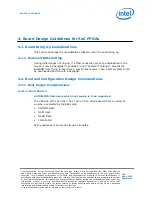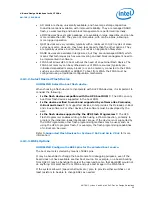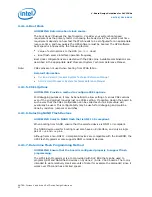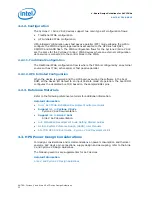
3.3.1. HPS Clock Planning
GUIDELINE: Verify MPU and peripheral clocking using Platform Designer
(Standard)
Use Platform Designer (Standard) to initially define your HPS component
configuration. Set the HPS input clocks, and peripheral source clocks and frequencies.
Note any Platform Designer (Standard) warning or error messages. You can address
them by modifying clock settings. In some cases you might determine that a
particular warning condition does not impact your application.
3.3.2. Early Pin Planning and I/O Assignment Analysis
GUIDELINE: Choose an I/O voltage level for the HPS Dedicated Function I/O
HPS_CLK1, HPS_CLK2, HPS_nPOR and HPS_nRST
are powered by
VCCRSTCLK_HPS
. These HPS Dedicated Function Pins are
LVCMOS/LVTTL
at either
3.3V, 3.0V, 2.5V or 1.8V. The I/O signaling voltage for these pins are determined by
the supply level applied to
VCCRSTCLK_HPS
.
Note:
HPS_PORSEL
can be connected to either
VCCRSTCLK_HPS
(for fast HPS POR delay) or
GND
(for standard HPS POR delay).
Note:
VCCRSTCLK_HPS
can share the same power and regulator with
VCCIO_HPS
and
VCCPD_HPS
if they share the same voltage requirement. The functionality of powering
down the FPGA fabric, while keeping the HPS running, is not needed.
3.3.3. Pin Features and Connections for HPS JTAG, Clocks, Reset and PoR
GUIDELINE: With the HPS in use (powered), supply a free running clock on
HPS_CLK1
for SoC device HPS JTAG access.
Access to the HPS JTAG requires an active clock source driving
HPS_CLK1
.
GUIDELINE: When daisy chaining the FPGA and HPS JTAG for a single device,
ensure that the HPS JTAG is first device in the chain (located before the FPGA
JTAG).
Placing the HPS JTAG before the FPGA JTAG allows the ARM DS-5 debugger to initiate
warm reset to the HPS. However, in case of cold reset the entire JTAG chain is broken
until the cold reset completes, as discussed in the next section.
GUIDELINE: Consider board design to isolate HPS JTAG interface
The HPS Test Access Port (TAP) controller is reset on a cold reset. If the HPS JTAG and
FPGA JTAG are daisy-chained together, the entire JTAG chain is broken until the cold
reset completes. If access to the JTAG chain is required during HPS cold reset, design
the board to allow HPS JTAG to be bypassed.
GUIDELINE:
HPS_nRST
is an open-drain, bidirectional dedicated warm reset
I/O.
HPS_nRST
is an active low, open-drain-type, bidirectional I/O. Externally asserting a
logic low to the
HPS_nRST
pin initiates a warm reset of the HPS subsystem. HPS warm
and cold reset can also be asserted from internal sources such as software-initiated
3. Design Guidelines for HPS portion of SoC FPGAs
AN-796 | 2018.06.18
AN 796: Cyclone V and Arria V SoC Device Design Guidelines
20

